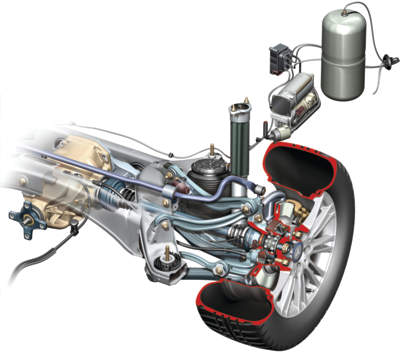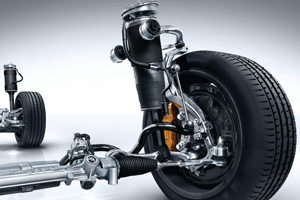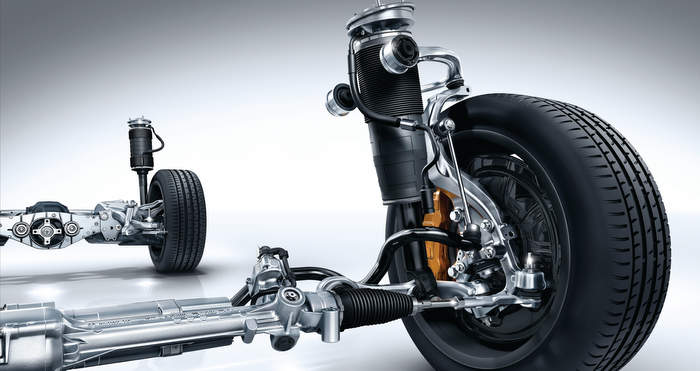There is a logic to air ride systems. Air ride systems can control vehicle ride height, passenger comfort and improve handling. How they operate and work with the rest of the systems on the vehicle is part of the embedded logic of the control system.
Written in this programming are three main edicts: preserve the compressor, keep the vehicle level and keep the vehicle safe.
Save the Compressor, Save the System
One job the system’s embedded logic can do is save the compressor from destroying itself. If a system has a leak, the compressor will have to work harder to keep the vehicle at the same ride height. When the compressor has to work for longer periods of time, it will get hotter. Excess heat can cause premature wear of the piston rings, and if the leak goes unchecked, it can cause the compressor to fail completely. When the pump fails, oil and metal debris can enter into the valves, reservoirs and bladders.
Most pumps do not have a thermocouple to measure the exact temperature. The computer module controlling the pump keeps track of how long the compressor has run and how long the correction should take. If a correction to ride height takes too long, the system knows that the compressor could overheat, set a code and then disable the pump before it is damaged.
Keep the Vehicle Level Logic
 When the air ride detects a substantial change in the position due to a load, it has pre-programmed logic to make the right correction that takes into account vehicle key position, amount of movement and other information.
When the air ride detects a substantial change in the position due to a load, it has pre-programmed logic to make the right correction that takes into account vehicle key position, amount of movement and other information.
If the key is off, some systems may wait 10 seconds before making a correction, some may wait until the vehicle is started. Most systems will limit compressor run time with the key off to preserve the battery.
If the vehicle is running, the corrections to the ride height are smaller and more targeted at tuning vehicle attitude.
Keep the Vehicle Safe
Most intelligent air ride systems use information from the ABS and ESC system like vehicle speed, yaw and driver inputs. If there is a problem with the air ride system, the vehicle knows the lack of body control will impact stability.
Late-model air ride systems are on the serial data bus. They can use different inputs from other systems to determine the correct position of the suspension, which can include vehicle speed, engine load and other PIDs. Likewise, the air ride module shares data with the other modules on the serial data bus. A simple failure of a door switch can cause the system not to work on some vehicles.
 Rather than letting the vehicle rest on the bump stops with the compressor running non-stop, the air ride system will disable or set the suspension at a safe pressure. The vehicle will then alert the driver with an instrument panel warning. Some vehicles limit the speed of the vehicle until the problem is resolved.
Rather than letting the vehicle rest on the bump stops with the compressor running non-stop, the air ride system will disable or set the suspension at a safe pressure. The vehicle will then alert the driver with an instrument panel warning. Some vehicles limit the speed of the vehicle until the problem is resolved.
Almost every air ride vehicle has a self-diagnostic process that occurs during start-up. Depending on the vehicle, this can include checking sensor inputs, valve actuation tests and pressure checks. On GM vehicles, if the self-check detects a problem, it will disable the system or put it in a fail-safe mode and alert the driver. It will also set a soft or pending “C” or chassis trouble code.
On some GM Electronic Shock Control (ESC) systems, the ESC module has the ability to store DTCs as current or history codes. The system uses an ignition cycling diagnostic approach in order to reduce the occurrence of false or intermittent DTCs that do not affect the functionality of the system. This allows for the fail-soft actions to be taken whenever a malfunction condition is current, but requires the malfunction to be current for a certain number of ignition cycles before the corresponding malfunction code and message will be stored or displayed. This is why you get some customers who say they started the car again and the problem was gone.
Information is Key
The key to understanding the embedded logic of air ride systems is service information. Most vehicles have the air ride logic included in the “system description and operation” section of the service information. Some OEMs include diagnostic tests in the service information that can pinpoint faults.
Some OEMs also have released new calibrations and programs that can be reflashed onto the control module. These programs can help to eliminate excessive key-off power drains and improve the logic of the air ride system.















